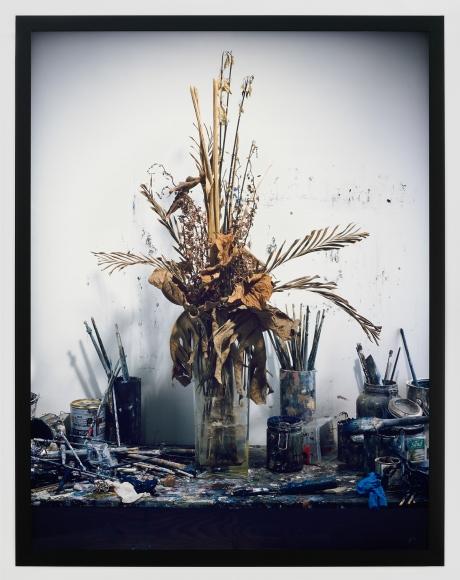The Credit X Film Programme, presented by Modern Forms, is a 12-month, 12-film series of video artworks shown via galleries in the Credit X network, curated by Mazzy-Mae Green, Nick Hackworth, and Greta Voeller, with each film to be shown alongside a text from one of the curators.
The programme’s third screening is of Libbi Ponce’s ‘Fernanda,’ which is available to watch from 21 February – 14 March 2022.
Text by Mazzy-Mae Green
Through the 360-degree lens of Fernanda, the 9-in-2019-year-old cousin of American-Ecuadorian artist Libbi Ponce, we experience the New Year festivities in Ecuador. In a blur of unsteadily handheld camera excitement, she takes us through animated streets filled with the explosive sound of fireworks, and through her home. While the cena is prepared, she pushes busy relatives to greet the camera. Throughout, the scenes are overlaid with glittering, digital lettering of the original-Gif variety, interspersed with floating, twisting computer windows that allude to the exchange of communication between two family members.
In the initial moments of the film, the audience finds Ponce atop a viewing platform on the Pichincha Volcano, looking out into the valley. It then cuts to a busy street at night, where Fernanda is holding the camera. HOLA / HELLO flashes pink across the screen. Panning the camera down, the viewer sees Fernanda’s hands clasped around it, building on the intimacy and visual wholeness of the interaction between Fernanda and Libbi, one presumably visiting from the US (‘Greetings from the United States’); one in Ecuador. The topic of the film perhaps speaks to the artist’s own multinational, multicultural background, and negotiating those different identities.
Ponce describes her practice as engaging with “themes of Latinx-Futurism and modes of decolonisation through the virtual”. Latinx-Futurism signifies the critique of how Native people have been absent from science fiction, embracing the technologies and ancestral bodies of knowledge that will allow for their future resilience. Through this lens, the artist intersperses the film’s familial sweetness and celebratory scenes with fragmented footage depicting culturally significant processes pertaining to colonialism and power relations between countries.
This can be seen in scenes such as the burnings of Disney icons and the 3d scanning of cultural artefacts, actions that speak to the profound influence, often pernicious, that the United States has had on Latin American politics since the 19th century, and on Ecuador itself. It also alludes to the dominance that technology allots one country over another, 3d scanning offering significant technological advantages. The first 3d-printed heart, made from human tissue, was made in 2019 at Tel Aviv University, the same year that Ponce made Fernanda. On the other hand, its application in the scanning of cultural objects is both fascinating, and also marginally macabre in its most-dramatic-to-date evidencing of the human desire to archive; as a medium that carries such potential as the reproduction of sacred monuments.
In a further conjoinment of the mirth and intricate history of Ecuador, the celebrations call to mind Ecuador’s official Independence Day from Spanish colonial rule, on 24th May 1822. Since then, it has experienced much poverty and unrest. Ecuador straddles the equator on South America’s west coast. It stretches parts of the Amazon rainforest, the Andean highlands, and the Galápagos Islands, making it one of the most biodiverse locations on earth. Its capital, Quito, is famous for its largely intact Spanish colonial centre, decorated with 16th and 17th century palaces and religious sites. It is furthermore a country rich in oil, which also feels like a sad indictment of conflict in the human world. This triglossia of landscape, coupled with governmental corruption that has destabilised the country’s economy, as well as the intense interest it has received from the US, has led to its financial and political turmoil.
This all sits in contrast, and runs parallel, to Fernanda, as she joyfully explores her world through the camera given to her by her cousin. As the film unfolds, the parallel becomes unsettling in its geopolitical reflections, if only because Ponce has laid them out in such a convincing way. It therefore becomes more prescient to view the country through the exuberance of a child, navigating a festival while unintentionally offering insight into the cultural landscape of her surroundings.
For more information on Fernanda, please contact Off Site Project.



